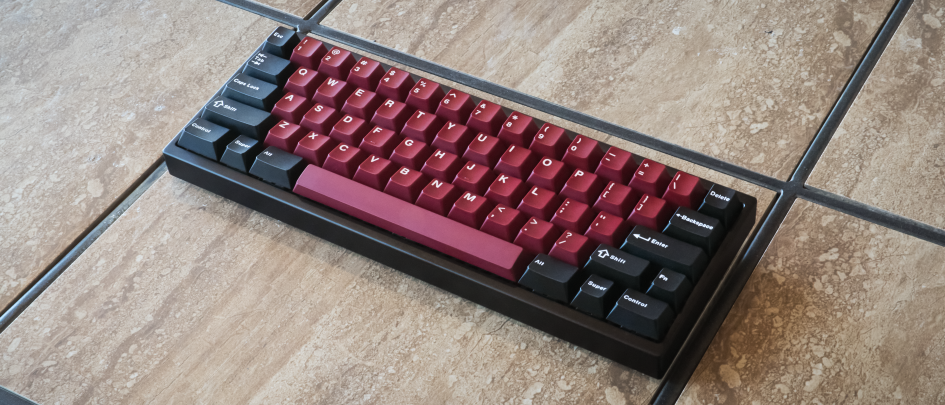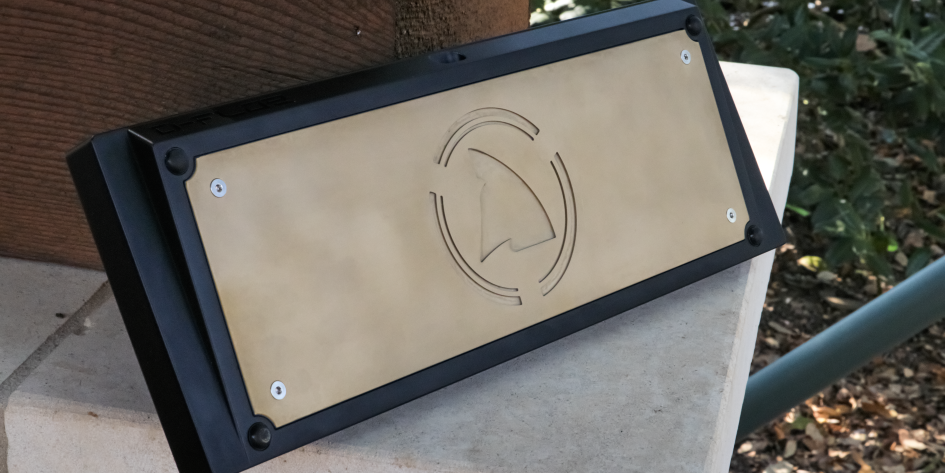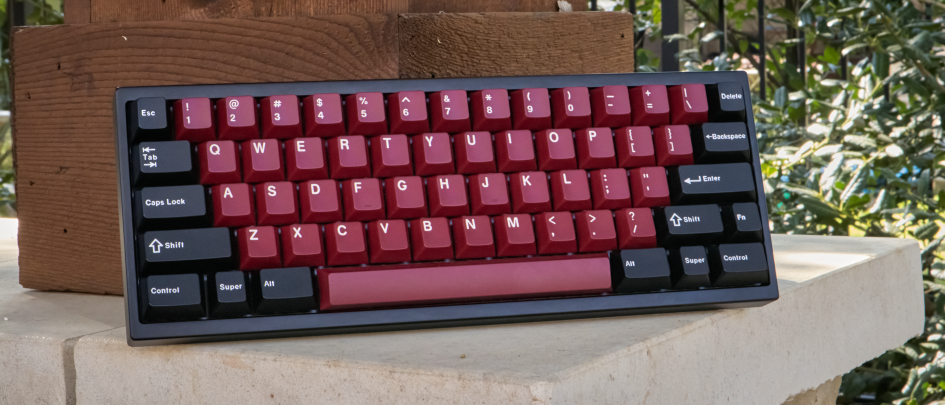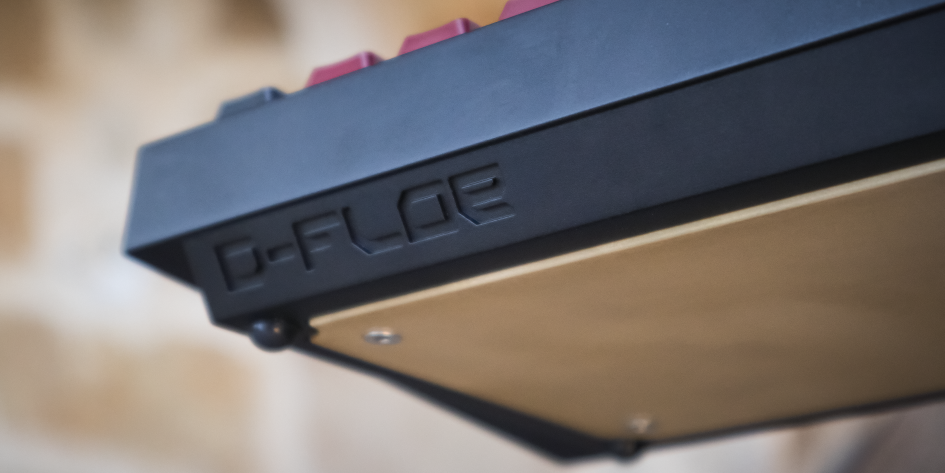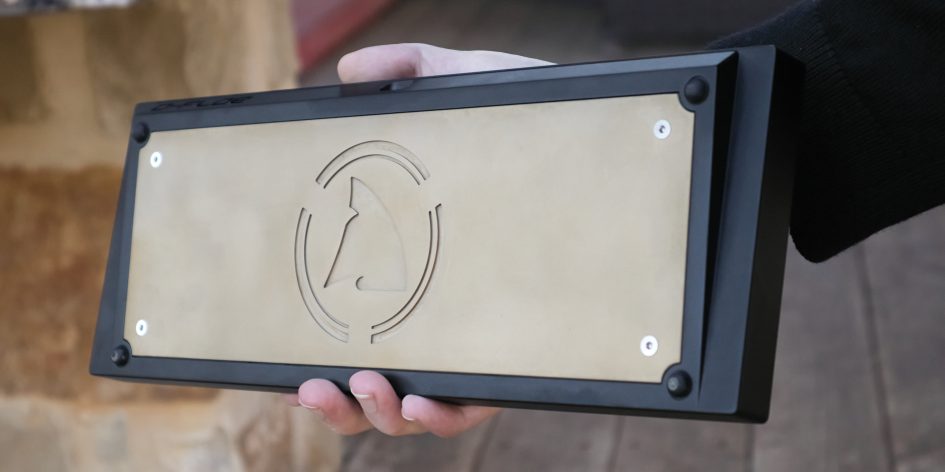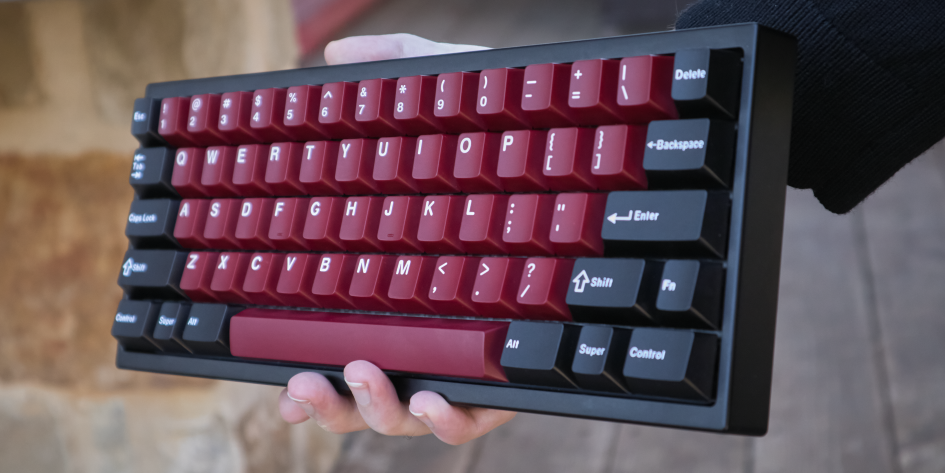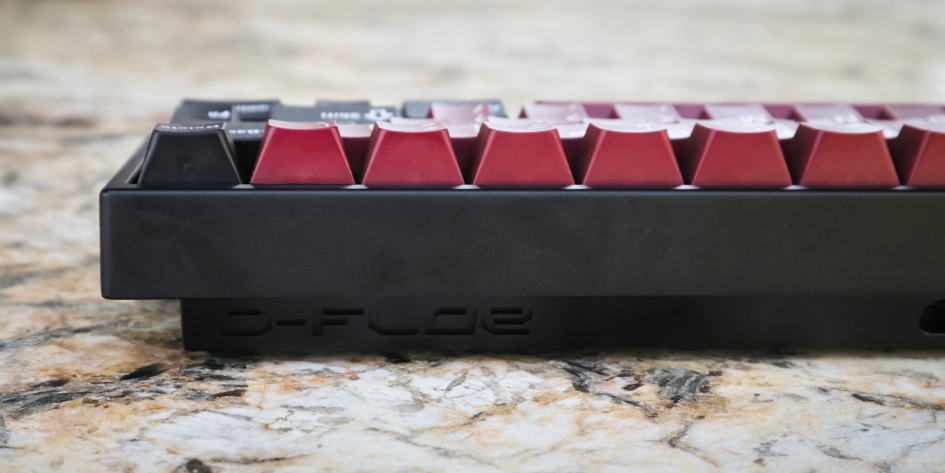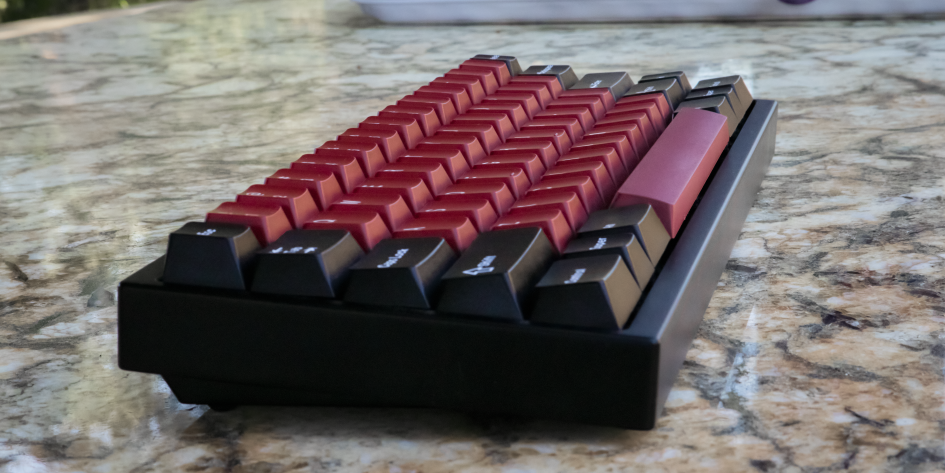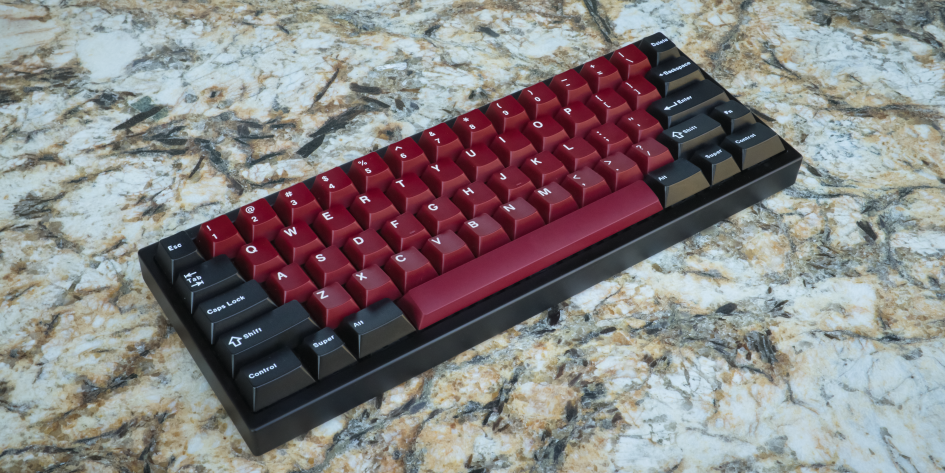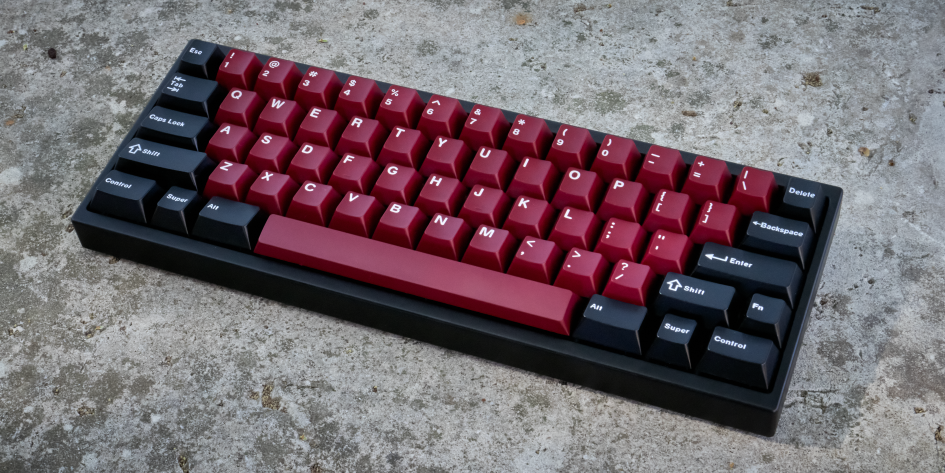
Sharkeneko with Linworks WoB and SW La Vie En Rose
Sharkeneko
- Received: May 4th, 2023
- Weight (built): 1474g / 3lbs 4oz
Summary
My baby, my ultimate daily driver. This board feels, sounds, and looks exactly how I want and is maxed out in customization to my liking. Everything in this build culminates to a very clacky, loud typing experience without compromising on the low or high ends. If I had to type on one board for the rest of my life it’d probably be this.
Journey
Original Concept
This keyboard came from the desire to own a stand-in for the highly coveted— and equally controversial— Singa Unikorn. When I heard that Kalam, a reputable keyboard cloner, was working on a clone a keyboard that was effectively unobtanium for the average joe, I was intrigued. Normally cloning isn’t that appealing to me but the Singa Unikorn had built its “gold status” reputation off of the arguably anti-consumer business practice of a raffle system that only served to create artificial scarcity and effectively lined the pockets of scalpers. That, paired with Singa’s venomous approach to DMCAing designers who strayed too close to their the Unikorn fostered what effectively became an “underground” cloning scene. Designers who wanted to replicate the magic of the OTD 356mini or Singa Unikorn started making small scale group-buy runs and single unit prototypes. A good example of this would be the Bongoneko.
While I was intrigued by Kalam’s efforts to clone the Singa Unikorn, I was remiss to discover that they would not be producing the board in anodized black, which was a bummer. So, upon finding this out, I took it upon myself to learn Fusion360.
Now, of course, I did not design the Sharkeneko from scratch, and to say that I even “designed” it at all is generous at best. The design of the Sharkeneko was effectively poached from the open-source glizzy-60-hidden-jst, which was a fork of glizzy-goblin’s glizzy-60. All I effectively did was extrude my name and logo onto the board. This however, as simple as it sounds on paper, was really difficult to figure out coming from a background of zero prior Fusion360 knowledge.
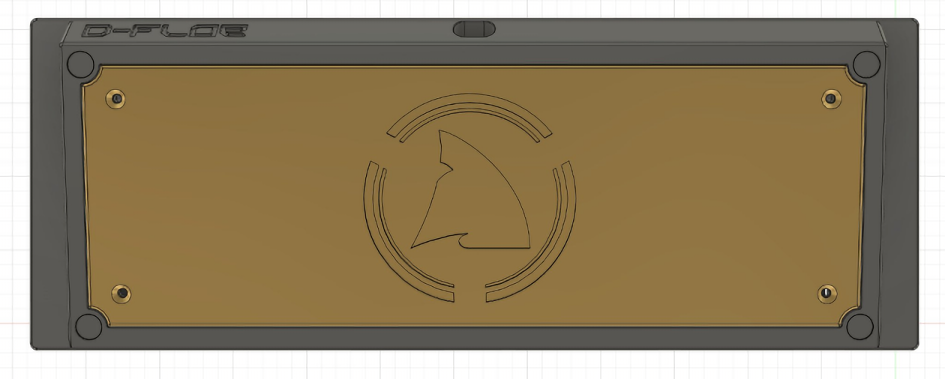
I tried a few different approaches to the design such as:

Standard brass weight with engraved logo
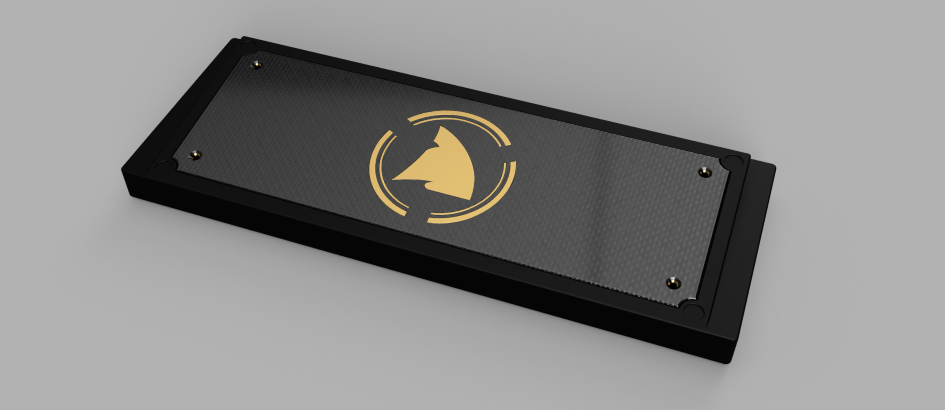
Brass weight with carbon fiber backplate.
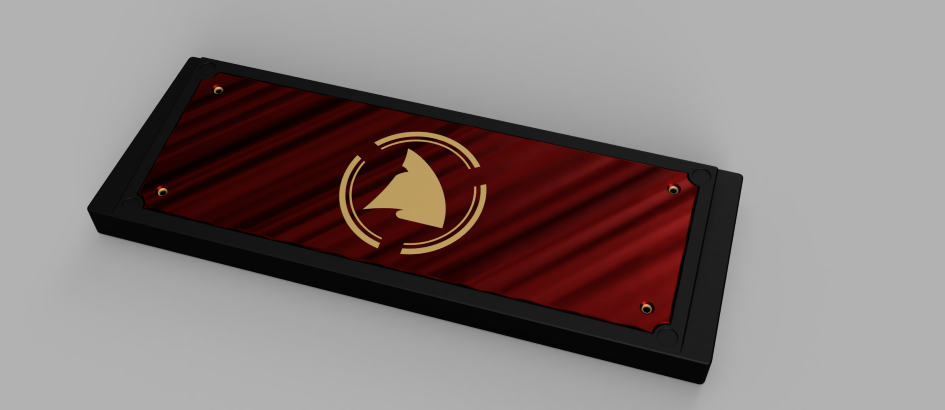
Brass weight with keycult/2 style aluminum backplate
Ultimately, due to manufacturing restrictions of 1mm minimum thickness, I ended up settling for the first design, and after much deliberation, I decided to go with a PVD finish instead of sand-blasted brass. This would ultimately prove to be a blunder (or perhaps a blessing in disguise?).
Build
The initial build process went pretty smoothly. I soldered 7305-0 Gold Mill-Max Sockets onto the Hineybush H60 PCB, making sure to leave the Esc key, and both Ctrl keys bare so that when it was time to put it together, the corner switches would remain attached, ensuring that the PCB and Plate assembly would remain inseparable. This is important when it comes to gummy-oring keyboards because the corners keep the o-ring in place. If you happen to remove the corner keys, you would effectively have to reassemble the whole thing, which would end up being a major hassle. All of the other keys are completely fine to remove, though.
Next, I went ahead and installed the stabilizers. With the help of Krytox XHT-BDZ, they were a breeze to tune.
My first hiccup with this build was designing the stabilizer cut-outs to be too tight on the carbon fiber plate. Initially I had trouble fitting the plate onto the PCB because the cut-outs did not fit the width of the TX Stabilizers. The fix was to file down the openings with a nail file. Thankfully this was very simple and didn’t cause any noticeable cosmetic defects due to carbon fiber being black all the way through as opposed to coated or anodized aluminum which scratches in a metallic gray. The decision to go completely single layout and flex-cut-less on the plate resulted in a very strong and full sound signature. It was the first build I was able to make without needing any plate or pcb foam. Full plates and full PCB’s are a big part of what makes a solid sound signature in a board.
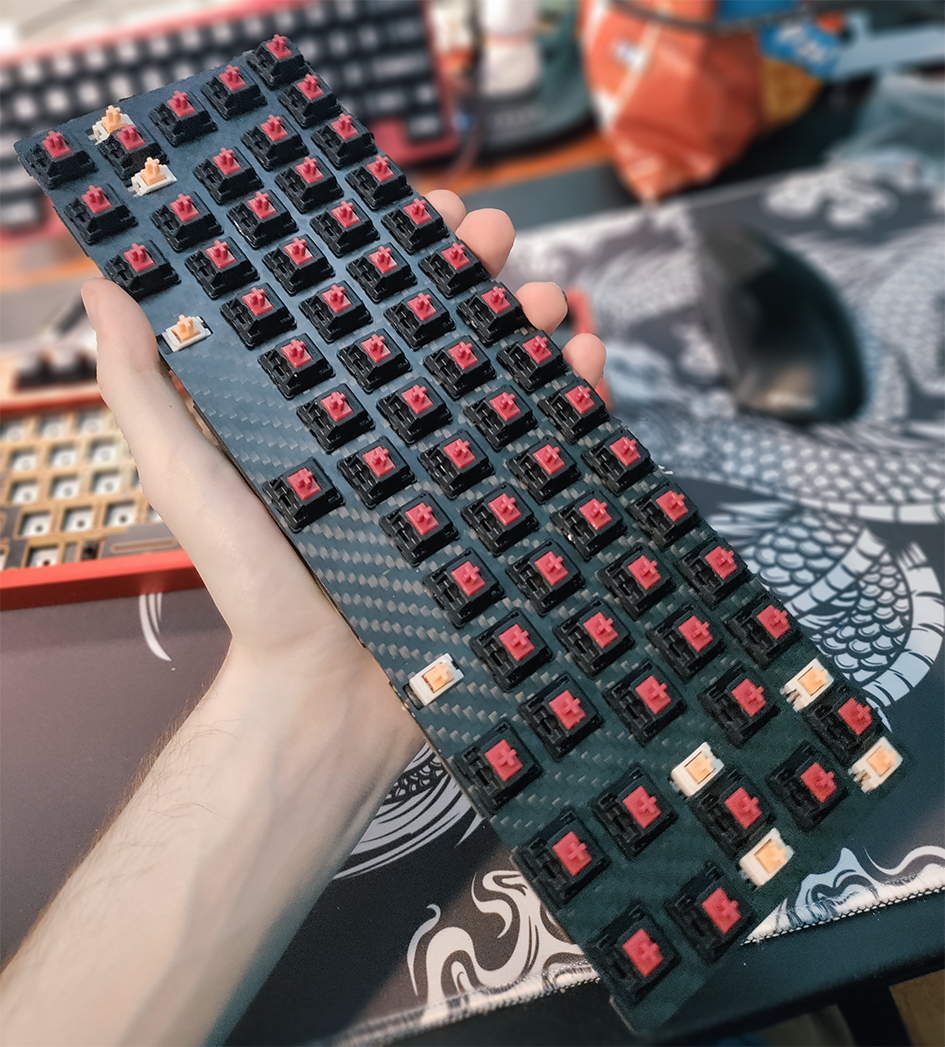
Note
The stabilizers pictured here are the long-pole variant of the TX Rev.3 stabilizers; however, I did end up swapping these out for the regular version.
The Chassis
The aluminum on this board was immaculate. Every other board I’ve used thus far utilized chamfered edges as opposed to filleted, but the difference between the two is night and day. I love handling this board, it’s incredibly smooth to the touch and I didn’t notice any machining errors whatsoever. There isn’t much else to say other than it’s the best anodized aluminum I’ve ever had the pleasure to handle.
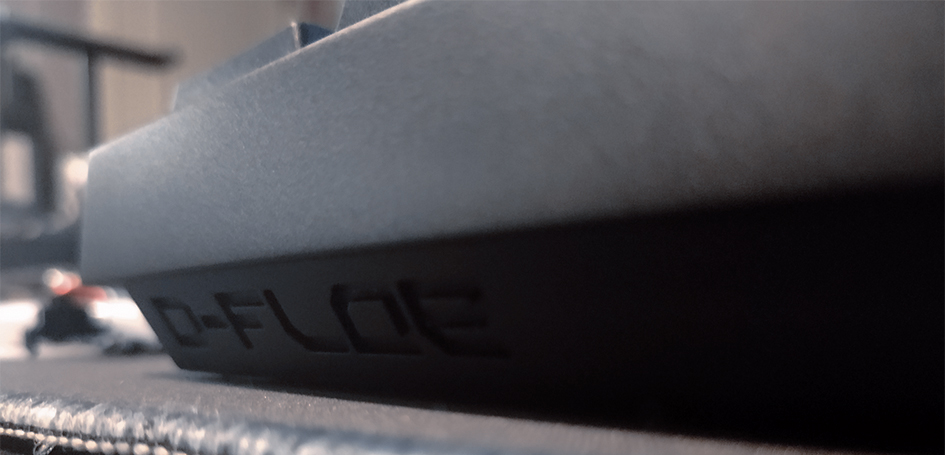
Stainless-steel Weight
This was probably the only part of the board I had issues with. The resulting finish of the PVD stainless-steel weight was not like the others I had seen on the manufacturers Instagram. It unfortunately was covered in scratches. The manufacturer was nice about it and let me order a sandblasted brass weight as a replacement, the cost of which was only for the clear-coat and shipping.
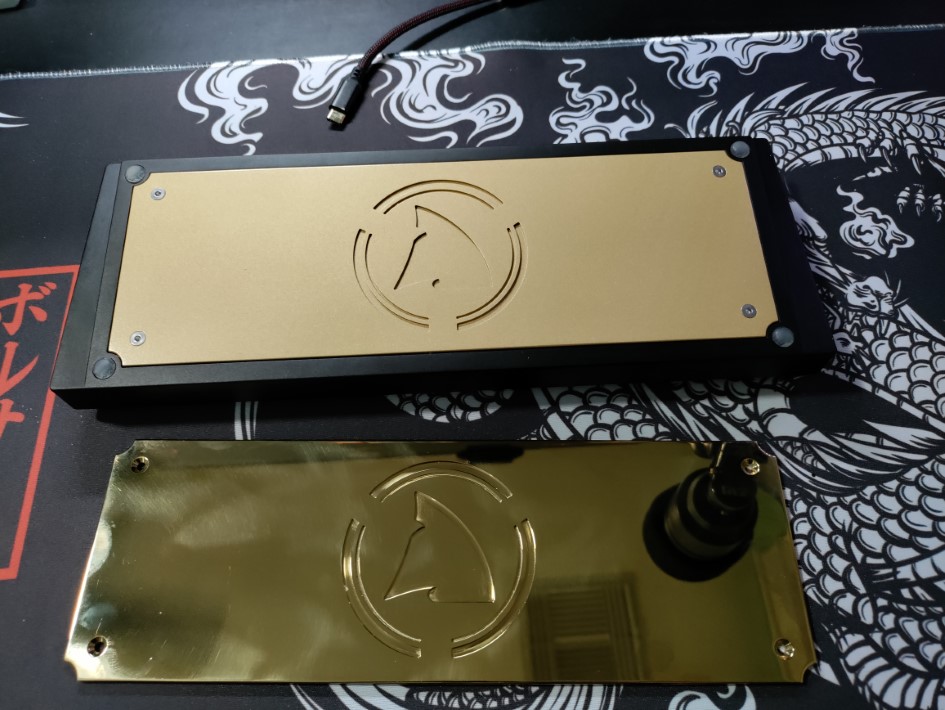
Brass Patina
The clear coat on the brass weight started to show signs of patina. I wasn’t sure what had stripped the clear-coating off the weight, but I figured that if was to get patina on my weight, I might as well make the patina look beautiful. I commissioned LoobedSwitches to strip the clear coat off my brass weight; however, there were complications with the process so the weight was returned with a bit more of a natural tarnish. The color of the brass is less vibrant but I feel that the patina will naturally come into its own over time and look better as time goes on.
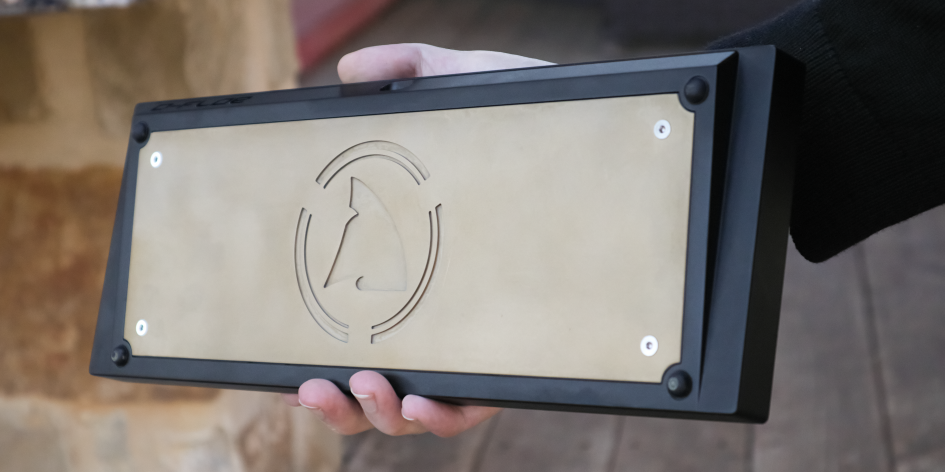
Parts
- Case: black anodized aluminum
- Configuration: Geon 3.5mm Poron LE-20, Soft Plate Foam in lower case
- I got the idea from Alexotos’ Mode Sonnet build. It seems to act as a middle ground dampener between shelf liner and a thick poron sheet.
- The sound is improved over no dampening, and the typing feel is unaffected.
- Keycaps: Bootleg GMK Burgundy
- Mounting: Graveshift 65a Gray M O-ring
- PCB: Hineybush H60
- Mill-Max sockets: 7305-0 Gold Sockets
- Plate: full carbon fiber
- Note: expand the tolerances on the stabilizer cut-outs
- Stabilizers: TX Stabilizers Rev.3
- Switches: Cherry Burgundy
- Feet: 8x4mm black silicone bumpers
- Weight: natural patina brass
clear-coat brassPVD stainless steel
Photoshoot
